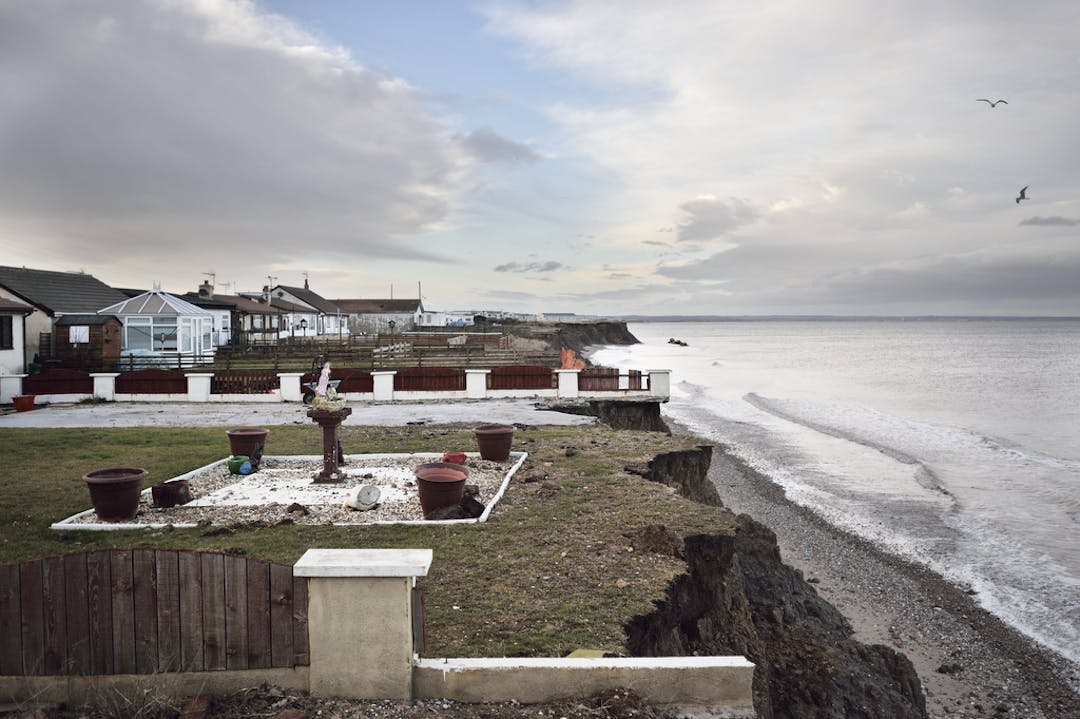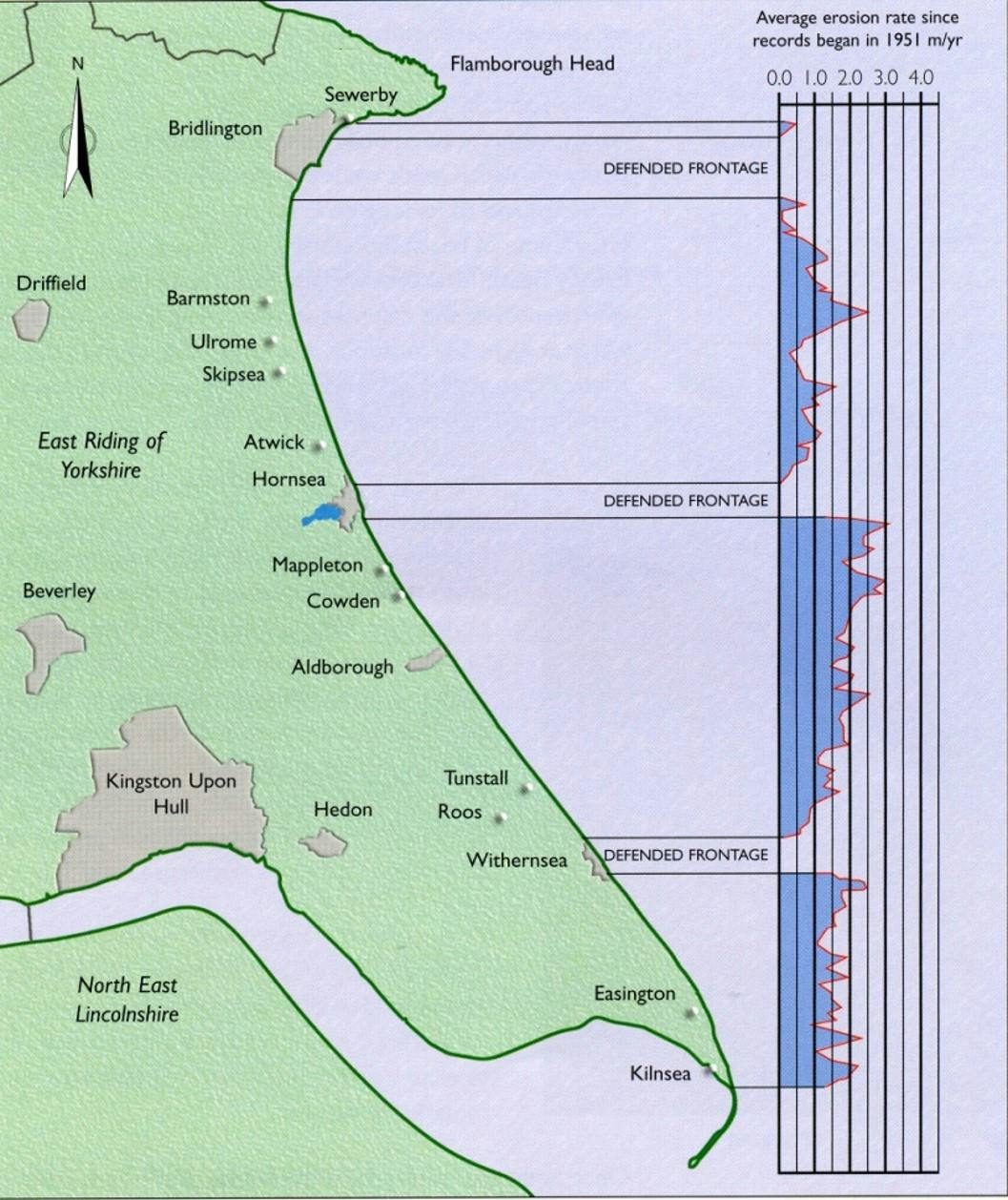Changing Coasts East Riding

Working together to create sustainable coastal places
Changing Coasts East Riding is collaborating with communities, businesses and specialists to respond to the impacts of climate-driven coastal change now and in the future. Together, we are developing and testing innovative engagement techniques, policies and funding mechanisms, whilst delivering practical on-the-ground transition schemes.
Hear about Changing Coasts East Riding from Richard Jackson (Coastal Change Manager)
Please click here to watch the video with subtitles.
The challenge

The East Riding coast stretches 85km from Flamborough Head to Spurn Point. Most of its geology is soft boulder clay, making it one of the most rapidly eroding coastlines in Europe. The impacts of climate change are expected to include rising sea levels and increased storminess. This will have a significant impact on erosion rates, with coastal communities at the forefront.
Shoreline Management Plans (SMPs) set out the policy for managing UK coasts for the next 100 years.
Local SMP: Shoreline Management Plan (external link).
Within the SMP, most of the East Riding’s coast has a long-term policy of No active intervention (external link). It is not socially, economically or environmentally sustainable to protect the whole coastline, so natural erosion processes are allowed to continue.
These undefended areas along the East Riding coast have average erosion rates of up to 4.5 metres per year. Some locations can experience individual cliff losses of 20 metres or more. Rapid erosion has seen many homes and communities lost over the centuries. Future coastal change is expected to result in the loss of more homes and businesses, as well as critical transport links, utilities infrastructure and natural assets.
The East Riding Coastal Change Fund has allowed us to support our most at-risk residents for more than 10 years. However, a more sustainable approach to managing coastal change is needed.
Aims
Changing Coasts East Riding provides a unique opportunity to establish the long-term needs of coastal places. Our work will enable coastal communities to successfully transition and adapt to coastal change now and in the future.
Key actions:
- Develop shared understanding of current and future coastal erosion and flood risk on the East Riding coast to improve local decision making and help communities and businesses prepare for coastal transition.
- Work with communities, businesses and stakeholders to create a long-term Strategic Transition Framework, ensuring mechanisms are in place to continue delivering transition actions beyond the end of the project.
- Identify and pursue opportunities to deliver the transition of community assets currently at a high level of risk.
- Work with academics, educational establishments and engagement specialists to build the capacity to deliver coastal transition within the East Riding in the long-term.
- Investigate and test innovative funding mechanisms which may be available to support coastal transition.
- Quantify and share our learning from a range of coastal transition interventions to support coastal transition in national policy and funding frameworks becoming mainstream.
Project themes
The four key themes underpinning the activities undertaken in Changing Coasts East Riding:
- Knowledge and Skills – engage with communities, businesses and partners to raise understanding of risk and develop the skills and evidence base necessary to deliver coastal transition.
- Practical Transition Delivery – on-the-ground transition schemes such as the rollback or replacement of community assets and the creation or enhancement of coastal habitats.
- Policy and Funding – development of a long-term strategic coastal transition framework for the East Riding, including a review of local planning policy and exploring and testing innovative finance and funding mechanisms for transition.
- Monitoring, Evaluation and Learning – quantification of the economic, social and environmental benefits of a range of coastal transition approaches and the dissemination of learning to mainstream coastal transition.
Find out more
Find out more about the coastal management challenges in East Riding by reading these summaries:




